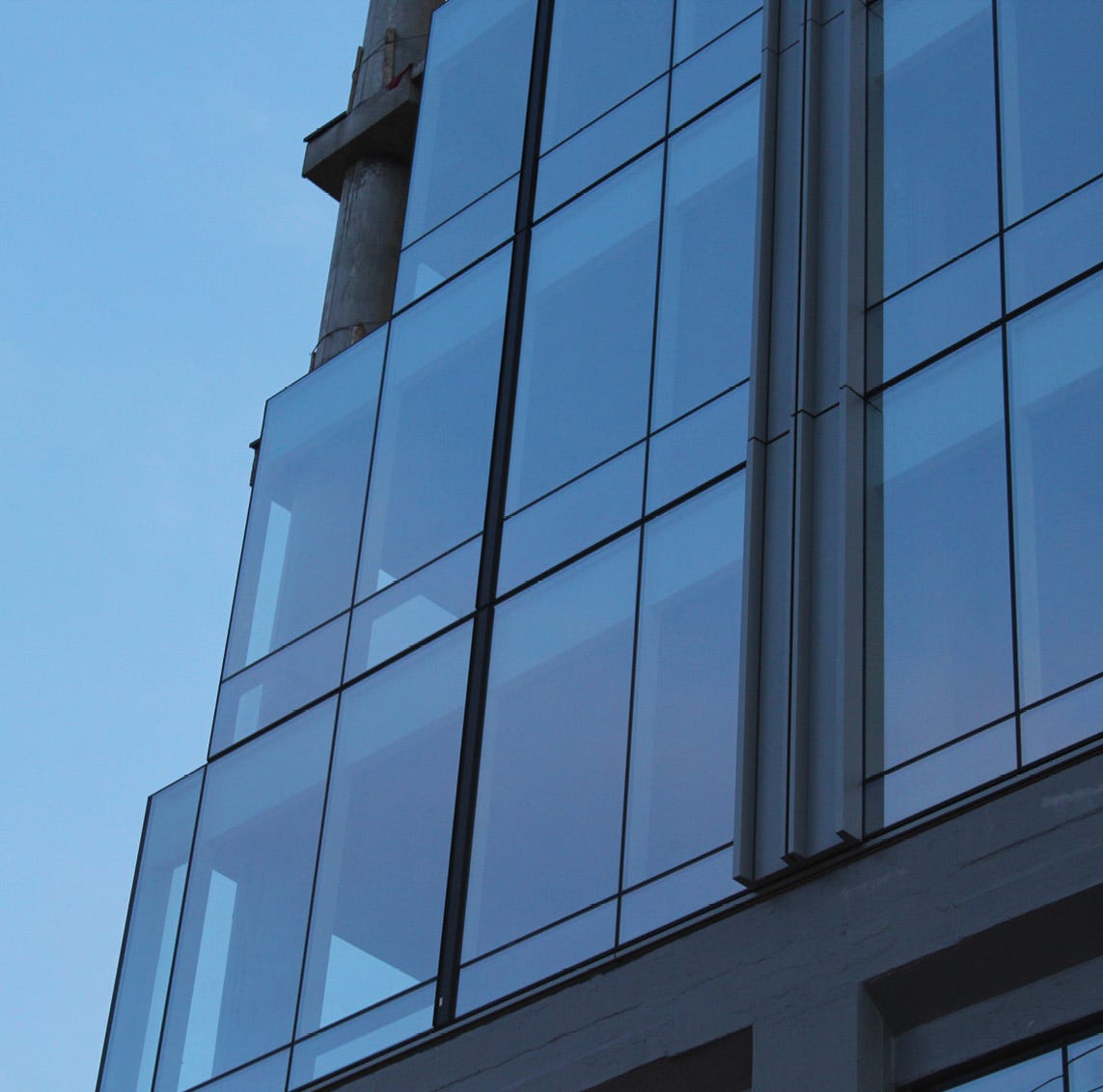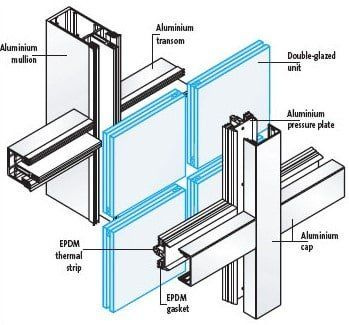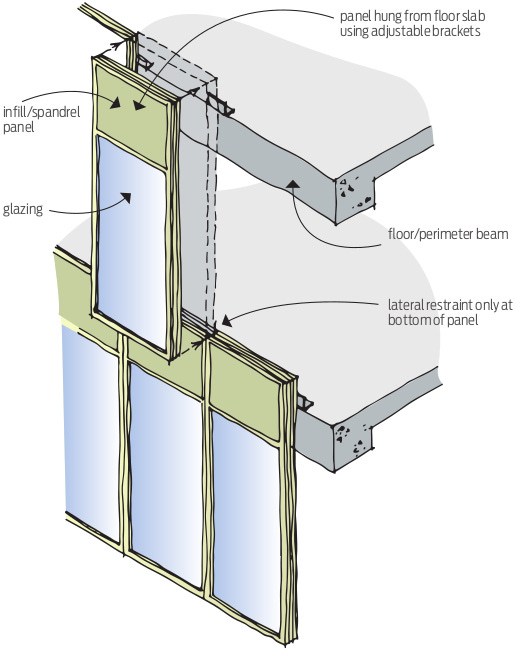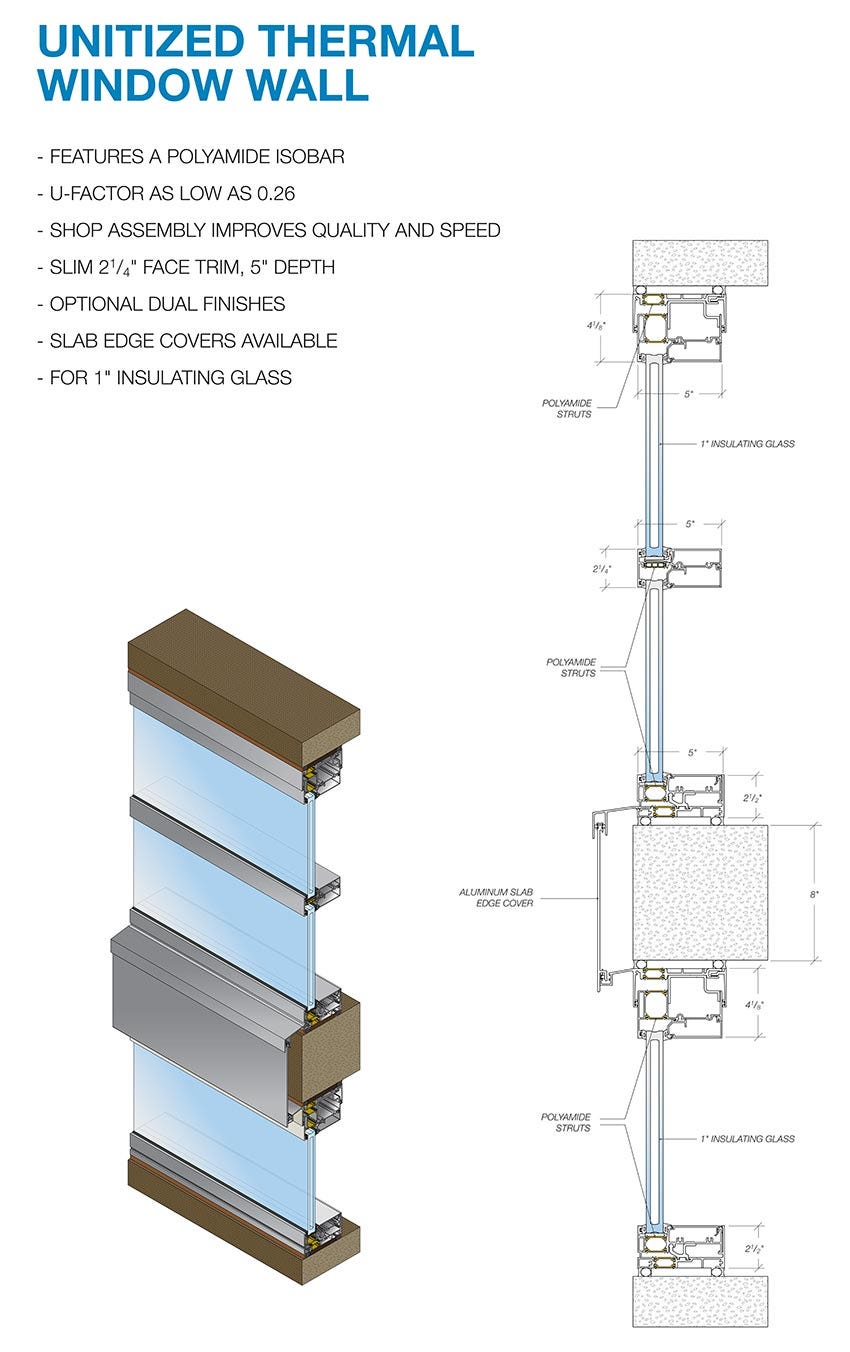Facade Fundamentals: An In-Depth Look at Curtain Walls, Window Walls, and Storefronts
Advanced Systems for Modern Building Envelopes.
This Week’s Top Highlights: In-Depth Look at Curtain Walls, Window Walls, and Storefronts
🪟 Curtain Walls in Piraeus Tower: The Piraeus Tower stands as a beacon of elegance and innovation along the Athenian Riviera. Read more.
🏬 Window Systems: Steel fenestration systems. Read more.
🏪 Huawei Flagship Store: The Living Forest of Harmony. Inspired by nature and Huawei’s ‘Harmony’ operating system. Read more.
Read Time: 4 Minutes
Curtain Walls: The Apex of Modern Facades
Understanding the differences between curtain walls, window walls, and storefront systems is crucial for selecting the right facade solution for your project.
Each system offers unique advantages and is best suited for specific applications. Stick and unitized curtain walls provide flexibility and speed, respectively, while window walls offer a seamless integration with structural floors, and storefront systems deliver economical and accessible solutions for ground-level applications.
Curtain walls are non-structural cladding systems that form the outer skin of a building. Unlike traditional walls, they are not load-bearing and are designed to resist air and water infiltration, sway induced by wind and seismic forces, and their own dead load weight. Curtain walls come in two primary types: stick systems and unitized systems.
Stick systems Vs. Unitized systems.
Stick Curtain Wall Systems:
Stick systems are assembled and glazed on-site, piece by piece. This method involves erecting the vertical mullions first, followed by the horizontal mullions, and finally, installing the glass or panels. Stick systems offer several advantages:
Flexibility: Adaptable to design changes during installation.
Cost-Effective: Generally less expensive in terms of initial material costs.
On-Site Adjustments: Allows for modifications and adjustments on-site, ensuring a precise fit.
However, stick systems also have drawbacks, such as longer installation times and increased labour costs due to the on-site assembly process.
Unitized Curtain Wall Systems:
Unitized systems consist of pre-assembled, pre-glazed units that are manufactured in a controlled factory environment and then shipped to the site for installation. These units typically include both vertical and horizontal components, providing a high degree of integration. Key benefits include:
Speed: Faster installation since units are prefabricated and only need to be connected on-site.
Quality Control: Higher quality due to factory-controlled manufacturing conditions.
Efficiency: Reduced labor costs and shorter construction timelines.
The primary disadvantage of unitized systems is their higher initial cost due to manufacturing and transportation expenses.
Window Walls: Seamless Integration with Structural Floors
Window walls are similar to curtain walls but differ in one significant way: they are installed between floor slabs, using the structural floors as a part of their support system. This system provides a continuous glazed appearance while integrating seamlessly with the building's structural components.
Advantages:
Cost-Effective: Often less expensive than curtain walls due to simpler installation and fewer materials.
Flexibility: Can be easily adapted for different floor-to-floor heights.
Thermal Performance: Potential for excellent thermal and acoustic insulation when properly designed.
Window walls are ideal for residential high-rises and mixed-use buildings, where maximizing natural light and views is crucial.
Storefront Systems: Ground-Level Solutions
Storefront systems are designed for ground-level applications, typically up to 10-12 feet in height. These systems are often used in retail spaces, commercial buildings, and entrances, providing transparency and accessibility.
Key Features:
Economical: Generally more cost-effective due to simpler design and installation processes.
Accessibility: Designed to facilitate easy access and egress, complying with various building codes and standards.
Customization: Available in various styles and configurations to suit aesthetic and functional requirements.
However, storefront systems are not suitable for high-rise applications due to their limited structural capacity and lower performance in terms of air and water infiltration resistance compared to curtain walls.
We hope this overview has provided valuable insights into these essential architectural systems.
Stay tuned for next week's edition, where we will explore the latest trends in sustainable facade materials and technologies.









